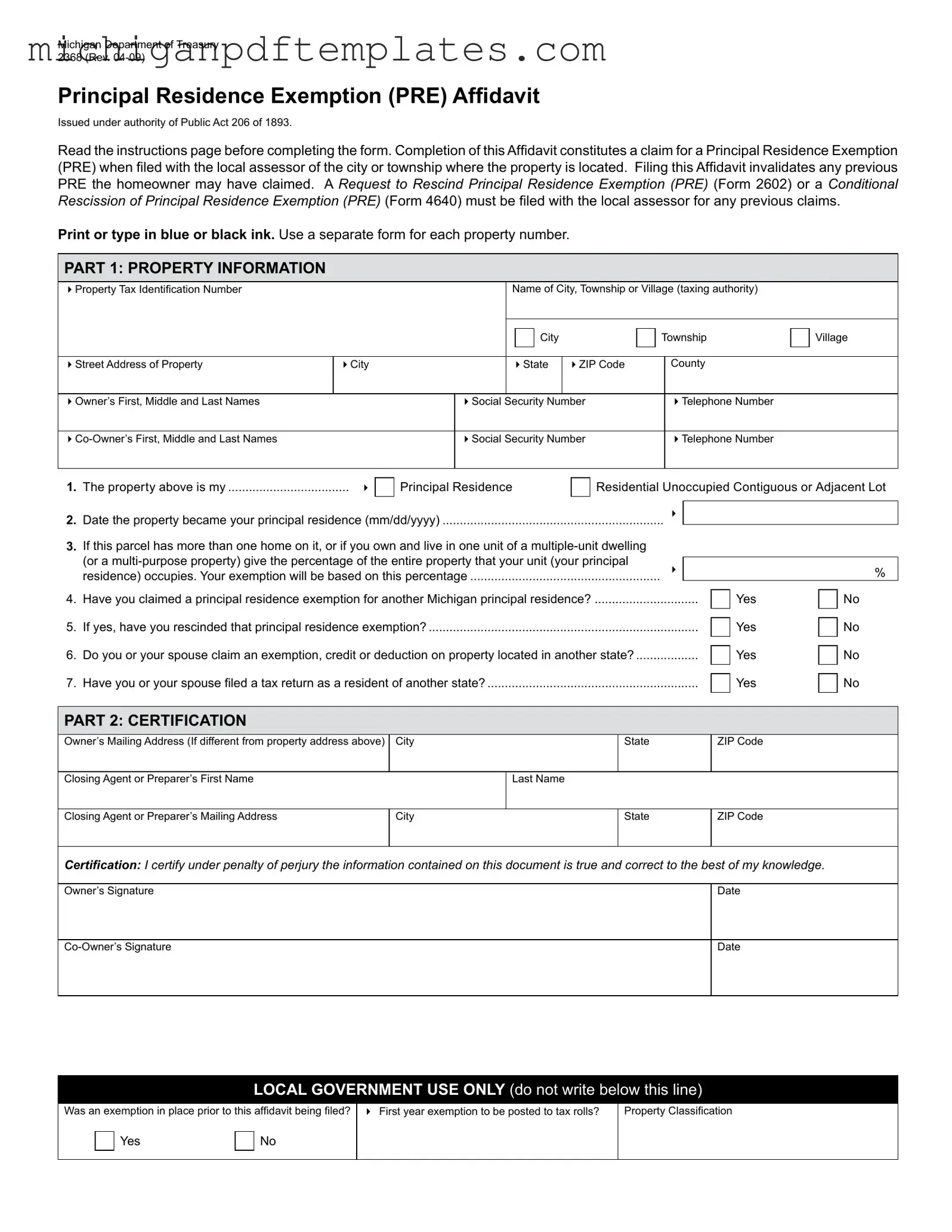The Michigan 2368 form, also known as the Principal Residence Exemption (PRE) Affidavit, is an essential document for homeowners in Michigan who wish to claim a tax exemption on their primary residence. Issued by the Michigan Department of Treasury, this form allows eligible homeowners to reduce a portion of their local school operating taxes, thereby easing their financial burden. To initiate this exemption, homeowners must complete the affidavit and submit it to their local city or township assessor by May 1 of the year they are claiming the exemption. It's important to note that filing the 2368 form will invalidate any previous PRE claims, so homeowners must also address any prior exemptions using the appropriate forms. The affidavit requires detailed property information, including the property tax identification number and the owner's personal details. Additionally, homeowners must certify that the information provided is accurate and true under penalty of perjury. Understanding the form's requirements and correctly completing it can significantly impact property tax obligations, making it a crucial step for homeowners seeking financial relief.
